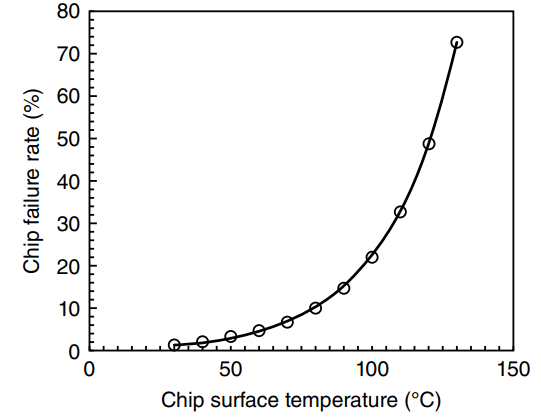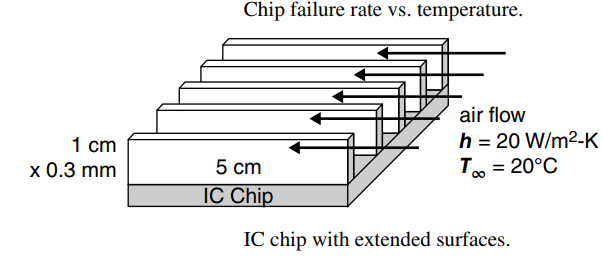A computer graphics chip measures 5 cm on a side and is 3-mm thick. The chip consumes
Question:
a. If the heat-transfer coefficient in air is 50 W/m2· K, what is the surface temperature of the chip at steady state if the bulk air temperature is maintained at 20°C (293 K)? What is the failure rate of the chip?
b. An aluminum extended surface heat-transfer device is next mounted on the top of the chip. It consists of a parallel array of five rectangular fins 1 cm by 5 cm wide by 0.3 mm thick. The new convective heat-transfer coefficient over the fin surfaces is 20 W/m2 · K. Is this configuration suitable? What is the new failure rate of the chip?


Fantastic news! We've Found the answer you've been seeking!
Step by Step Answer:
Related Book For 

Fundamentals Of Momentum Heat And Mass Transfer
ISBN: 9781118947463
6th Edition
Authors: James Welty, Gregory L. Rorrer, David G. Foster
Question Posted:





